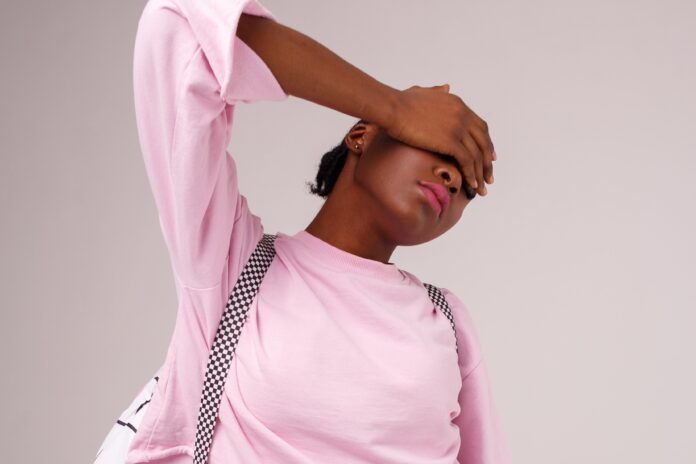In recent years, fashion from the African continent has been making waves in the global fashion industry. From bold and vibrant patterns to modern, up-cycled designs, African fashion is continuing to break boundaries and re-define the way the world views African style. With the growth of independent African-based fashion houses and brands, a new fashion renaissance has been sweeping across the continent, and it’s time to celebrate the amazing work of these inspiring African designers!
1. Exploring the Rise of African Fashion
African fashion is on the rise around the world, and the continent is proudly redefining what it means to dress well. African fashion is now garnering the attention it deserves, with the increasing visibility of worldwide clothing lines and independent designers looking to make sustainable fashion.
The bold and vibrant designs are often seen in the form of wax prints or Kente cloth. Bright colors and intricate patterns have become the norm, as a way to connect classic African culture and heritage to the modern era. Unconventional tailoring, unique fabrications, and eclectic prints are becoming more commonplace in wardrobes and streetwear ensembles.
Innovative African designers are bringing their signature style to the international stage. African fashion has made its way to red carpets, runway shows, and magnifies the diversity of the industry through collaborations and more. These inclusive collaborations also bring awareness to a culture while portraying it positively. African fashion is a reflection of the continent’s creativity, innovation, and resilience.
African fashion combines the traditional and electric, creating sophisticated glamour through a variety of silhouettes, flamboyant art, and modern accessories. People around the world have embraced the style, appreciating the vibrant and dramatic elements of African fashion.
- The designs are heavily influenced by traditional African colors.
- Many African fashion lines focus on the use of sustainable materials.
- Collaborations between designers from different parts of the world are increasing the visibility of African fashion.
- People from around the globe are finding value in the colorful and incomparable style.
African fashion is an essential part of the continent’s identity, allowing Africans to showcase their unique culture and heritage to the world. It is a style that keeps growing louder, as more people become exposed to its rich history and creative expressions.
2. Celebrating African Designers
Africa is a continent bursting with glorious creativity, from the rich colors of African art to the unique designs of African apparel. African designers are taking the fashion world by storm, bringing a breath of fresh air to international runways. Here are a few of the African designers making waves all over the world.
1. Loza Maleombho
Loza Maleombho has been wowing crowds with her unique designs since being the first African designer to show at the Mercedes-Benz Fashion Week in New York. Her creations combine traditional African apparel with modern silhouettes, bringing her designs into the 21st century. Maleombho has captured the attention of celebrities, with her pieces being worn on the red carpet.
2. Iconic Invanity
Iconic Invanity is a luxury fashion house based in Lagos, Nigeria that has been making waves with their collections that fuse both African and Western styles. They specialize in clothes that honor African culture and customs, ranging from intricately embroidered dresses to brightly colored dashikis, and their attention to detail is evident in each of their pieces.
3. Ozwald Boateng
Ozwald Boateng is a British-Ghanaian designer who is known for his modern, sophisticated style. He has dressed celebrities such as Will Smith and the late Whitney Houston, and he has used the power of his creations to promote positive social change. In 2010, Boateng was the first male designer of African heritage to headline a Paris fashion show.
4. Kiki Clothing
Kiki Clothing is a label owned by Senegalese-American designer Khoudia Sylla. Her vibrant designs feature traditional prints and patterns from her West African home, paired with modern silhouettes. Sylla’s designs not only reflect her African heritage, but also her love for sustainability, as the Kiki Clothing brand practices conscious consumption by creating sustainable pieces using deadstock fabrics.
5. Orange Culture
Orange Culture is a menswear label created by Adebayo Oke-Lawal, an award-winning designer from Nigeria. His collections are inspired by his Yoruba heritage, combining traditional African prints with contemporary details. Oke-Lawal’s mission is to redefine what it means to be an African man, and his designs have been seen on celebrities such as Will Smith and Vogue editor-in-chief Anna Wintour.
3. Examining the Rebirth of African Inspired Styles
The world of fashion has recently seen a rise in African-inspired styles. The international co-option of traditional African fashion has led to a resurgence of incredible fabrics and styles across the globe. This trend has revolutionized the world of fashion, giving rise to the likes of bold, vibrant prints, vibrant colors, and contemporary designs.
One can see traditional African-inspired fashion everywhere today, from high-end boutique stores to the runways of some of the world’s most famous fashion designers. African-inspired fashion has become increasingly popular and is often seen on celebrities and influencers around the world.
The adoption of African-inspired fashion reflects a growing appreciation for the culture and beauty of the African continent. From wrap-dresses to vibrant, African fabrics, these designs are evidence of the continent’s vibrant culture and vibrant colors. The beautiful embroidery and intricate beading designs often seen in African-inspired fashion reflect the skill and craftsmanship of the many African cultures.
In addition to introducing beautiful fabrics and styles to the world, African-inspired fashion has also brought forth a unique sense of confidence. Individuals who choose to wear African-inspired styles can show off their bold, courageous, and confident side. Quality pieces are often made from sustainable, high-quality materials which ensure durability and longevity.
- Bold Prints – From wax prints to vibrant, Aztec-like designs, the world of African-inspired fashion is full of unique, bold prints.
- Vibrant Colors – Orange, red, yellow, and blue all come together in African-inspired fashion to create a color palette like no other.
- Contemporary Designs – Many African-inspired designs offer a modern twist on traditional African style.
Overall, African-inspired fashion is a trend that’s here to stay. Thanks to the influx of African fabrics and styles, the world of fashion is increasingly vibrant and diverse. One can take advantage of this trend to introduce a unique sense of pride for one’s own culture.
4. Reclaiming African Textiles and Cultural Identity
African textiles have been used for centuries to express cultural identity and regional affiliations, from their vibrant colors and patterns to the unique hand-crafted designs. It is no surprise, then, that reclaiming African textiles has become an important part of restoring a sense of cultural identity for people of African descent. Here are four strategies to :
- Research Your Roots: Seeking out information regarding your ancestry can help build your understanding of the textiles, patterns, and designs used to express the identity of your ancestors. Reach out to family members, visit community archives, and review ancient artifacts to understand the significance and specific features of African textiles.
- Learn the Language of Color: Color is an integral part of African textiles, and these colors convey messages about a person or community’s identity. Take the time to learn the various African languages of color, such as their significance and how it relates to African cultures and traditions.
- Purchase African Textiles: Acquiring African textiles from local vendors or artisans is an effective way to reclaim and reintroduce African textiles into one’s own wardrobe. Shopping responsibly is of utmost importance, as it enables African artisans and small businesses to continue their craft.
- Share Your Experience: After acquiring African textiles, it is important to share this experience with others. Wear African textiles, take part in fashion events, and share your stories with friends and family—not only does this express an appreciation for African textiles, but also it serves as an effective tool for educating wider audiences.
These strategies allow those of African descent to reclaim their cultural identity and, furthermore, to share their experiences, knowledge, and traditions with others. By reclaiming African textiles, one is not only embracing one’s own identity, but also possessing a sense of ownership over one’s culture, history, and heritage.
Reclaiming African textiles further opens up conversations about difficult topics, such as the history of the African slave trade, and the significance of African culture and identity in contemporary life. In this way, African textiles can foster a collective cultural identity which transcends national and regional divides.
5. Celebrating the Opportunities of the African Fashion Renaissance
The African fashion renaissance is a powerful shift that is changing the landscape of fashion across the world. It has granted African designers the opportunity to redefine the way fashion has been seen traditionally, and to celebrate its beauty and uniqueness. With this newfound recognition, African designers have been able to create a global impact, making a name for themselves in the fashion industry.
- African Textiles and Designs: African fashion is known for its use of bright colors, vibrant patterns and unique textiles. Embroidery, Kente, Ankara fabrics, mud cloths and Dashiki are just a few of the expressions used to celebrate African culture and make it a stand-out on the fashion scene.
- Opportunity to Re-Invent Traditional Styles : African fashion has also given rise to re-inventing traditional styles and modernizing them for more westernized audiences. This has allowed the fashion industry to experience a more diverse range of designs and clothing options while also allowing African designers to use traditional elements and add their own unique style to it.
- Exposure to the Global Fashion Market: The African fashion renaissance has also given African designers the opportunity to gain exposure in the global fashion market, allowing them to showcase to an even larger audience and bring their unique designs and cultural elements to the forefront.
- Young Designers Trusted with Global Brands : Many international fashion labels like Balmain, Louis Vuitton, and Marc Jacobs have taken advantage of African fashion’s influence and are now giving young African designers the chance to show their skill and talent to the world.
The African fashion renaissance is a beautiful celebration that will continue to promote the growth and recognition of African fashion on a global scale. With more African designers being given the chance to express themselves and showcase their unique designs, there is no limit to what can be achieved in the fashion industry. As the world of fashion continues to evolve, so too does the recognition of African fashion and the opportunity for these designers to make an even bigger impact.
Today the African fashion renaissance is driven by an increased appreciation for the unique design and styles of its designers. Embracing African fashion is not only fashionable but also bound to close the gap between African design and the rest of the world. As African designers continue their push for recognition in the global fashion industry, the beauty of African fashion will only be further enhanced.




